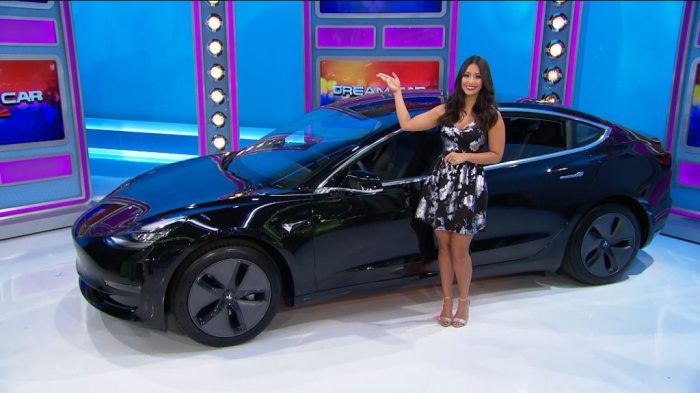The Price is Right New Car Buying Guide
Understanding “The Price is Right New Car”
The price is right new car – The phrase “the price is right” in the context of new car purchases signifies a balance between affordability and value. It represents the sweet spot where a buyer feels they’ve obtained a vehicle that meets their needs and budget without feeling overcharged. This perception is heavily influenced by marketing, consumer psychology, and the overall car-buying experience.
Cultural Significance of “The Price is Right” in Car Buying
The phrase reflects a common consumer desire for a good deal. In a market often perceived as opaque and potentially exploitative, finding “the price is right” offers a sense of accomplishment and satisfaction. It taps into the cultural value placed on shrewdness and getting the best possible deal, particularly for a significant purchase like a new car.
Examples of “The Price is Right” in Advertising and Marketing
Car manufacturers and dealerships frequently employ strategies to create the impression of a “right price.” This can involve highlighting special offers, emphasizing discounts, or focusing on financing options that make monthly payments seem more manageable. Advertisements often showcase the vehicle’s features and benefits alongside a prominently displayed price, aiming to create a sense of value for money.
Psychological Impact of “The Price is Right” on Potential Buyers, The price is right new car
The phrase triggers a positive emotional response, associating the purchase with feelings of satisfaction and smart decision-making. It reduces buyer anxiety related to overspending, fostering a sense of control and confidence in the buying process. Conversely, a perceived lack of “the right price” can lead to frustration and a reluctance to proceed with the purchase.
Successful Utilization of “The Price is Right” Concept by Car Brands
Brands like Honda and Toyota, known for their reliability and value, often leverage the “price is right” perception in their marketing. Their advertising frequently emphasizes fuel efficiency, long-term value, and competitive pricing. Other brands might focus on specific deals or financing packages to create a similar impression.
Analyzing New Car Prices: The Price Is Right New Car
New car prices are influenced by a complex interplay of factors, making comparisons and negotiations challenging. Understanding these factors is crucial for buyers to assess whether a given price is indeed “right”.
Pricing Strategies of Different Car Manufacturers
Manufacturers employ various pricing strategies, ranging from premium pricing for luxury brands (e.g., BMW, Mercedes-Benz) to value-oriented pricing for brands targeting budget-conscious consumers (e.g., Kia, Hyundai). Some manufacturers focus on niche markets with specialized features commanding higher prices.
Factors Influencing New Car Prices
Several key factors influence new car prices. These include the cost of raw materials (steel, aluminum, plastics), technological advancements (advanced safety features, driver-assistance systems), manufacturing costs, marketing and distribution expenses, and prevailing market demand (supply and demand dynamics).
Role of Dealerships in Setting New Car Prices
Dealerships play a significant role in setting the final price a consumer pays. They typically have some flexibility in negotiating prices within a range set by the manufacturer. Factors like dealer location, competition, and inventory levels can influence the final price offered to the customer.
Comparison of Base Prices of Popular New Car Models
| Make | Model | Trim | Price (USD) |
|---|---|---|---|
| Toyota | Camry | LE | 26,000 |
| Honda | Civic | LX | 23,000 |
| Ford | Escape | S | 27,000 |
Note: Prices are approximate and may vary depending on location, options, and dealer incentives.
The “Deal” Aspect of New Car Purchases
Securing a favorable deal involves understanding negotiation tactics, financing options, and the overall process of purchasing a new car. Effective strategies can significantly impact the final price paid.
Common Negotiation Tactics Used by Car Buyers
Buyers often employ strategies like researching market prices, comparing offers from multiple dealerships, negotiating financing terms, and leveraging incentives or rebates. Patience and persistence are key to achieving a favorable outcome. Understanding the dealer’s pricing structure and profit margins can also aid negotiations.
Financing Options Available for New Car Purchases
Financing options include loans from banks, credit unions, and dealerships. Buyers should compare interest rates, loan terms, and fees before committing to a financing plan. Leasing is another option, which offers lower monthly payments but less ownership at the end of the lease term.
Steps Involved in Securing a Favorable Car Loan
Securing a favorable car loan involves checking credit scores, comparing loan offers from multiple lenders, negotiating interest rates and terms, and carefully reviewing the loan agreement before signing. Understanding the total cost of borrowing, including interest and fees, is essential.
Flowchart Illustrating the Process of Negotiating a New Car Purchase
A flowchart would visually represent the steps: 1. Research and identify desired vehicle; 2. Obtain pre-approval for financing; 3. Visit dealerships and obtain quotes; 4. Negotiate price and terms; 5.
Finalize financing and paperwork; 6. Complete purchase and take delivery.
Consumer Perceptions and Expectations
Consumer reviews, complaints, and expectations significantly shape the perception of whether a new car’s price is “right”. Understanding these aspects is vital for both buyers and manufacturers.
Examples of Consumer Reviews and Testimonials Regarding New Car Pricing
Online platforms like Edmunds and Kelley Blue Book are replete with consumer reviews. These often highlight experiences with pricing transparency, negotiation processes, and overall satisfaction with the purchase price. Positive reviews often emphasize a feeling of getting a fair deal, while negative reviews focus on feeling pressured or overcharged.
Common Consumer Complaints About New Car Pricing and the Buying Process

Source: teslarati.com
Common complaints include hidden fees, aggressive sales tactics, lack of transparency in pricing, and difficulties negotiating. Many consumers express frustration with the complexity of the car-buying process and the feeling of being pressured into making a quick decision.
How Consumer Expectations Influence the Perceived Value of a New Car
Consumer expectations, shaped by advertising, reviews, and personal experiences, significantly influence their perception of value. If a car doesn’t meet their expectations in terms of features, performance, or price, they may feel the price isn’t “right”, even if it’s objectively within the market range.
Finding the right price for a new car can be challenging, especially with so many models and options available. If you’re considering a three-wheeled option, you might want to check the specifics on pricing by looking at the details for a slingshot car price 2020 new model to compare. Ultimately, securing the best deal on a new car requires thorough research and careful consideration of your budget and needs.
Key Factors Consumers Consider When Evaluating the “Price is Right”
- Overall price
- Monthly payments
- Features and options included
- Fuel efficiency
- Resale value
- Warranty and maintenance costs
- Dealer reputation and service
- Financing terms and interest rates
Visual Representation of Price and Value
A compelling visual representation can effectively communicate the value proposition of a new car, clarifying the relationship between price, features, and long-term costs.
Hypothetical Infographic Comparing New Car Price to Features and Resale Value
An infographic could present a bar chart comparing the price of a new car to the cost of its individual features (e.g., engine, safety technology, infotainment system). Another section could illustrate projected depreciation and resale value over several years, providing a holistic view of the total cost of ownership.
Elements of a Compelling Visual Representation of New Car Pricing

Source: distractify.com
A compelling visual should be clear, concise, and easy to understand. It should use charts, graphs, and other visual elements to present complex data in a digestible format. A strong visual hierarchy, consistent branding, and relevant imagery are essential.
How Visuals Can Effectively Communicate the Value Proposition of a New Car
Visuals can effectively demonstrate the value proposition by highlighting key features, comparing prices across different models or trims, and showcasing the long-term cost of ownership. They can make complex information easily accessible, making it easier for consumers to assess whether the price is “right” for them.
FAQ Overview
What are common hidden fees associated with new car purchases?
Common hidden fees can include dealer preparation fees, destination charges, and various add-on products like extended warranties or paint protection.
How long should I expect the car buying process to take?
The process can vary greatly, but it’s reasonable to expect it to take several hours, potentially spanning multiple days if financing is involved.
What’s the best time of year to buy a new car?
The end of the month and the end of the quarter are typically good times to negotiate, as dealerships often have sales quotas to meet.
How can I improve my negotiating position when buying a new car?
Researching the market, pre-approving for a loan, and knowing your budget are crucial for strong negotiating power.




















